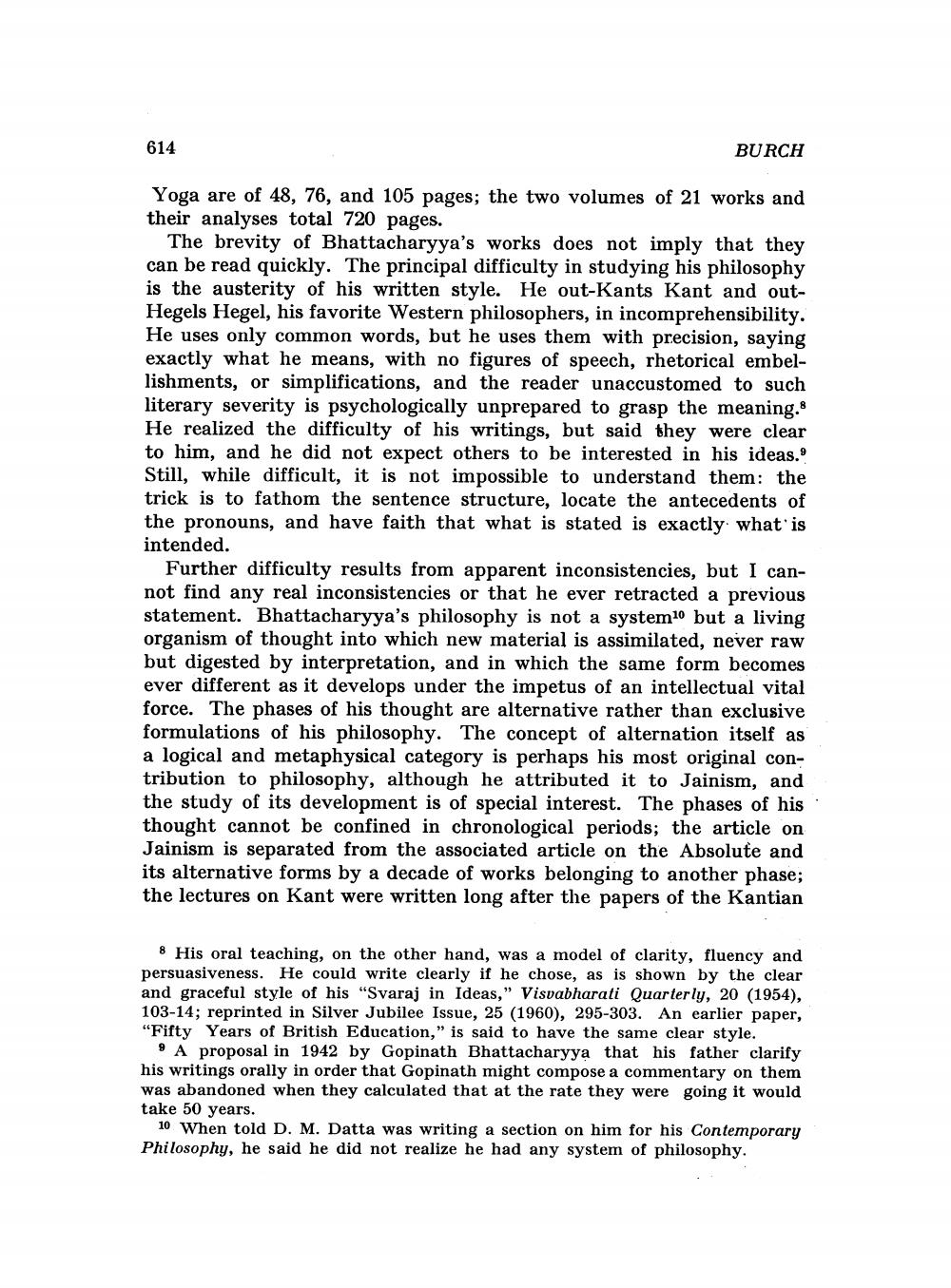Book Title: Search For Absolute In Neo Vedanta Author(s): George B Burch Publisher: George B Burch View full book textPage 4
________________ 614 BURCH Yoga are of 48, 76, and 105 pages; the two volumes of 21 works and their analyses total 720 pages. The brevity of Bhattacharyya's works does not imply that they can be read quickly. The principal difficulty in studying his philosophy is the austerity of his written style. He out-Kants Kant and outHegels Hegel, his favorite Western philosophers, in incomprehensibility. He uses only common words, but he uses them with precision, saying exactly what he means, with no figures of speech, rhetorical embellishments, or simplifications, and the reader unaccustomed to such literary severity is psychologically unprepared to grasp the meaning. He realized the difficulty of his writings, but said they were clear to him, and he did not expect others to be interested in his ideas. Still, while difficult, it is not impossible to understand them: the trick is to fathom the sentence structure, locate the antecedents of the pronouns, and have faith that what is stated is exactly what is intended. Further difficulty results from apparent inconsistencies, but I cannot find any real inconsistencies or that he ever retracted a previous statement. Bhattacharyya's philosophy is not a system but a living organism of thought into which new material is assimilated, never raw but digested by interpretation, and in which the same form becomes ever different as it develops under the impetus of an intellectual vital force. The phases of his thought are alternative rather than exclusive formulations of his philosophy. The concept of alternation itself as a logical and metaphysical category is perhaps his most original contribution to philosophy, although he attributed it to Jainism, and the study of its development is of special interest. The phases of his thought cannot be confined in chronological periods; the article on Jainism is separated from the associated article on the Absolute and its alternative forms by a decade of works belonging to another phase; the lectures on Kant were written long after the papers of the Kantian 8 His oral teaching, on the other hand, was a model of clarity, fluency and persuasiveness. He could write clearly if he chose, as is shown by the clear and graceful style of his "Svaraj in Ideas," Visvabharati Quarterly, 20 (1954), 103-14; reprinted in Silver Jubilee Issue, 25 (1960), 295-303. An earlier paper, "Fifty Years of British Education," is said to have the same clear style. 9 A proposal in 1942 by Gopinath Bhattacharyya that his father clarify his writings orally in order that Gopinath might compose a commentary on them was abandoned when they calculated that at the rate they were going it would take 50 years. 10 When told D. M. Datta was writing a section on him for his contemporary Philosophy, he said he did not realize he had any system of philosophy.Page Navigation
1 2 3 4 5 6 7 8 9 10 11 12 13 14 15 16 17 18 19 20 21 22 23 24 25 26 27 28 29 30 31 32 33 34 35 36 37 38 39 40 41 42 ... 57
